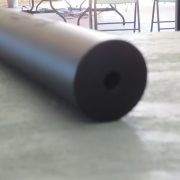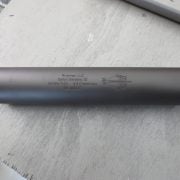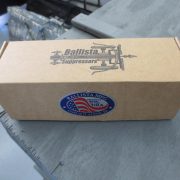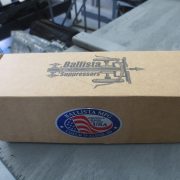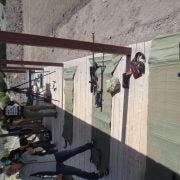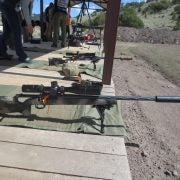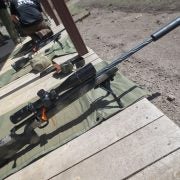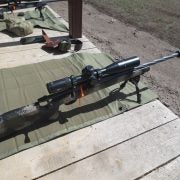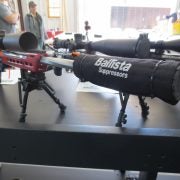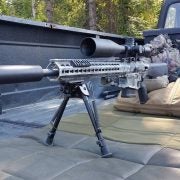All too often companies try to create the best all-around product instead of focusing on trying to do something really well. In the effort to make everyone happy, the product often gets heavier, more complicated, and more expensive. So what happens when a company says they are going to focus on doing one thing better instead of all things OK? Excellence.
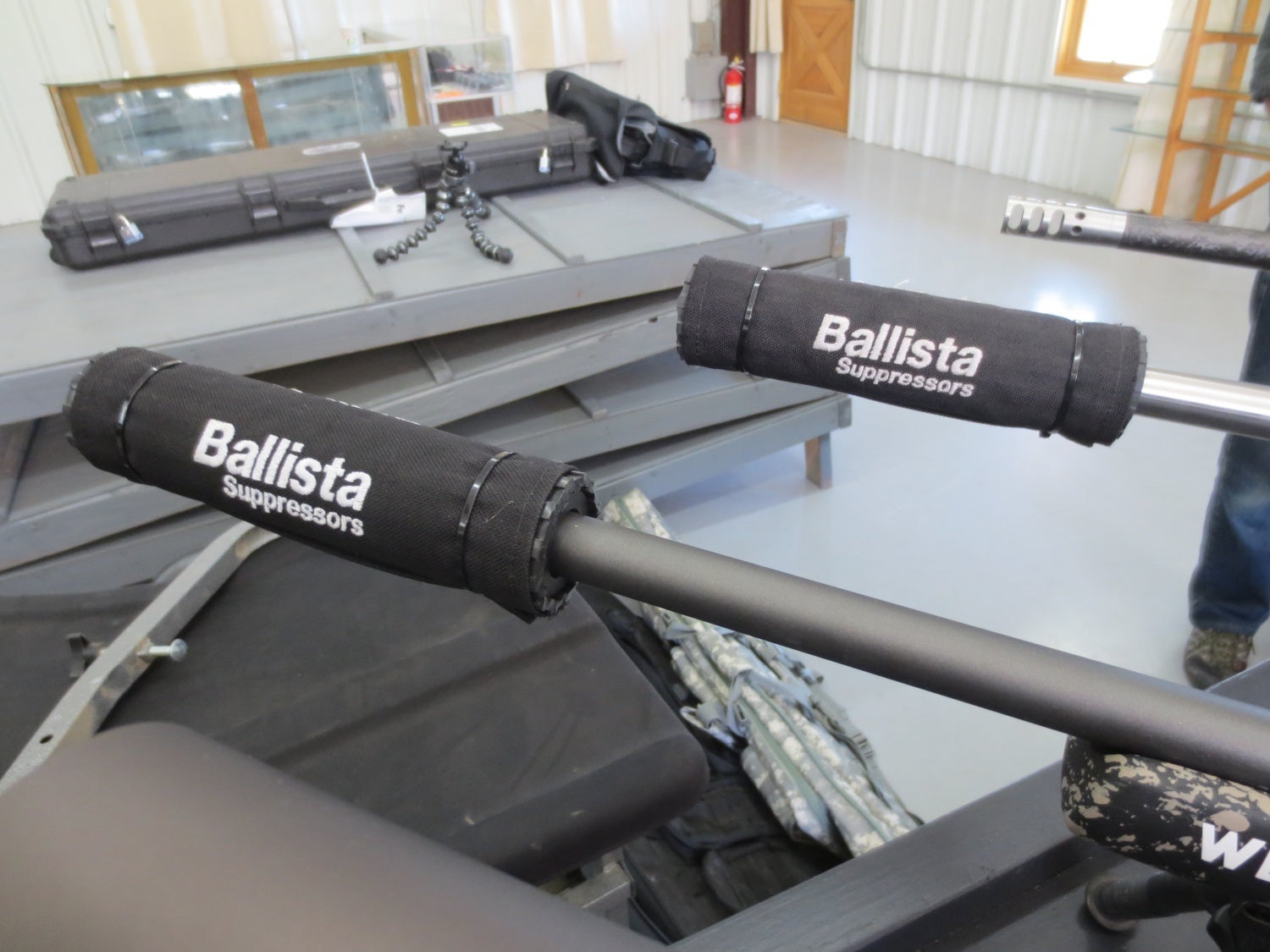
Author’s Note – This review is part of a series stemming from an event that TFB was pleased to join with other writers at Mill Creek Shooting Resort. We want to disclose that all the writers’ expenses were provided by the various companies putting on the event. Ballista / Idaho Suppressor company was one of the sponsors.
ENTER BALLISTA SUPPRESSORS / IDAHO SUPPRESSOR COMPANY
It’s likely you noticed the unusual title of the review with what seems like two company names. They are, in fact, a single and the same company. Originally released as Ballista Suppressors, the company found that Ballista was already used in the industry and is going through renaming to ISC or Idaho Suppressor Company.
Ballista / ISC is a daughter company of Riverman Gun Works in partnership with Hardy Rifle Engineering of New Zealand. Where Riverman provides the manufacturing expertise, Hardy is the primary designer of the suppressor itself, where the focus was on providing the best solution to a given problem – namely POI shift inherent to the installation of any suppressor.

POI shift is primarily caused by two factors – the weight of the suppressor changing the harmonics of a given weapon system and the deflection of the bullet by gases inside the suppressor versus the crown only during uncorking. Thus, the solutions are easy in concept, yet hard to design, engineering and manufacture: keep weight down while decreasing gas disruption.
Hardy and Riverman were not daunted and have instead picked up the gauntlet. Seeing “full-auto” ratings as an impediment to keeping weight down, the pair opted not to pursue it – instead of focusing on decreasing weight by using Titanium. This titanium is combined with three key design features to address the handling of gasses:
Monocore:
Designed by a leader in over-the-barrel suppressors, Hardy Rifle Engineering of New Zealand, the L/E Ti-OTB suppressor has a unique monocore design that works on a gas recirculation principle. This method causes the gas to be in continuous motion inside the suppressor. The more the gas moves, the more energy it uses. As the gas uses its energy, it cools; as the gas cools, it contracts. the more the gas contracts, the less is remaining to exit the suppressor into the atmosphere to create a noise signature.
A monocore suppressor also reduces the number of parts in the overall design, which means less issues with parts alignment, virtually erasing the likelihood of a baffle strike or parts coming loose.
Over the Barrel Expansion Chamber
Over barrel suppressors typically add less to the overall length of the rifle when compared to muzzle mounted suppressors, while still offering competitive Db ratings. This is due to the use of expansion chamber that sits over top of the barrel. High-pressure gas is ducted rearward into the over-barrel section and is stored there for a short period of time. Thus reducing the quantity of baffles required and in turn reducing the length of the muzzle forward portion of the suppressor.
Continuous Motion Design
Designed by a leader in over-the-barrel suppressors, Hardy Rifle Engineering of New Zealand, the L/E Ti-OTB suppressor has a unique monocore design that works on a gas recirculation principle. This method causes the gas to be in continuous motion inside the suppressor. The more the gas moves, the more energy it uses. As the gas uses its energy, it cools; as the gas cools, it contracts. the more the gas contracts, the less is remaining to exit the suppressor into the atmosphere to create a noise signature.
A monocore suppressor also reduces the number of parts in the overall design, which means less issues with parts alignment, virtually erasing the likelihood of a baffle strike or parts coming loose.
USING THE BALLISTA / IDAHO SUPPRESSOR COMPANY CAN
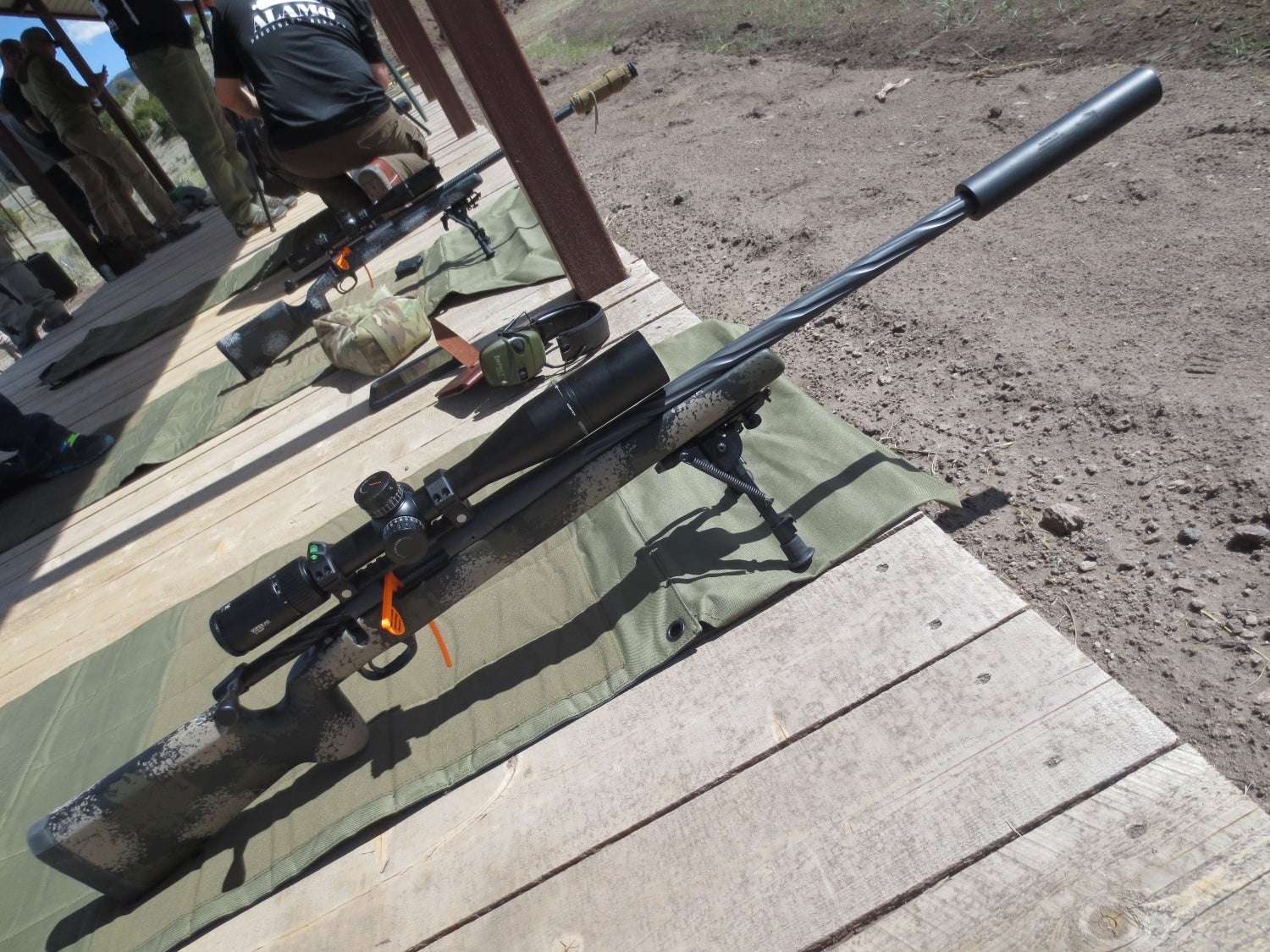
Author’s Note: The can was provided attached to the Alamo Precision Rifles L.R.M.F. rifle seen in a previous review. The can was not shot by the author on semi-auto weapons. Riverman did provide a list of various law enforcement users with these successfully installed on AR-15s and similar weapons. Ballista / ISC cans were on all rifles used by writers at the event. All other writers reported similar experiences to my own.
Picking up the can off the rifle the most striking features are its weight (practically nothing, especially compared to other similar cans of the size), and the exterior. Rather than opt for various aesthetic embellishments Ballista / ISC went the complete opposite – the exterior is spartan except for the laser-engraved logos and legal requirements. This seems to be a practical decision, keeping the exterior consistent for the easy mounting of a suppressor cover – critical to long-range shooting by reducing haze.

Looking at just the externals, it would not be otherwise obvious that the suppressor was over-the-barrel. In fact, looking at them mounted to weapons, it’s hard to see unless one is looking at the muzzle closely. It’s only when the suppressor goes onto the barrel and it swallows up three inches does one appreciate the design feature as much.

For my rifle, I was equipped with a Ballista Ti-G1 marked can for .308 Winchester shooting a 6.5 Creedmoor rifle. Despite the caliber mismatch, the can was more than hearing safe. Once behind the gun (and away from other shooters), the suppressor was more than adequate at reducing the crack of the weapon to hearing safe levels. Frankly, that’s all I ask of a can as further reduction while slightly more enjoyable is not needed.
Taking the can off for only a single shot, the recoil reduction is in line with similar offerings. While I can’t formally state a certain percentage, I would say it similar to the effectiveness of most simple muzzle brakes. Combined with the caliber and recoil bad, there was no reason to flinch a shot for any reason. One may even call the shooting comfortable.
Across the next three days, the weapon and suppressor saw about 500 rounds of 6.5 Creedmoor Hornady 140 Grain ELD Match, which were handled with ease. The only issue found was when the weapon was getting hot, a zero shift was noted – ultimately determined to be the suppressor had loosened. Without wrench flats to torque consistently, it may happen again, but a good hand-cranking brought the weapon back to zero quickly.

Other writers at the event comments mirrored my own, with those of us technically inclined really noticing the weight of the can. Weighty cans on long-barreled weapons were noticed easily and directly compared to a well-known can, the balance of the weapon was noticeably better. On a precision weapon this may not be a big deal, as one is almost always on a bipod, bag, or similar, but on a semi-auto gun such as a law enforcement carbine, bringing balance to the rear makes for a more nimble muzzle – potentially life-saving.
BULLET POINTS:
The Good:
- Suppresses to hearing-safe.
- Over-the barrel design keeps OAL to just 5″, despite 8″ suppressor length.
- Extremely light at 13.5 ounces.
- Lifetime warranty.
- Offered in three common calibers: 5.56, 6.5, and .308.
The Notable:
- They acknowledge it’s not the quietest can out there (29 dB reduction), but their focus is on repeatable zero performance, weight, and reducing the effects of a heavy can on a long barrel.
- At $1,095, it’s not the cheapest can on the market, nor the most expensive.
- As a 100% titanium can, it’s great for bolt-action and semi-autos
The Bad:
- Hard to get ahold of one in the civilian market. They focus primarily on law enforcement customers first and with running at near capacity, civilians may have a long wait.
- As its direct-thread only, would like to see a wrench flat on there to get consistent torque at screwing on or break it off if it ever becomes carbon-locked.

FINAL THOUGHTS:
The Ballista Suppressors Ti-G1 or Idaho Suppressor Company L/E Ti-OTB cans are well ahead of their time. With suppressor companies focusing on creating more volume inside the can and using innovative flow-through designs to slow down and cool gasses versus just stopping them with traditional baffles, the Ballista / Idaho Suppressor company can is well ahead of the pack.
Instead of opting to make something “full-auto rated” as is so often desired, Ballista / Idaho Suppressor Company opts to focus on making the best can for semi-auto and bolt-gun usage. By leaving the requirements to stand up to excessive head out, the can is shorter, lighter, and reduces POI shift to the absolute minimum.
Considering that vast majority of us will never own a full-auto firearm, the Ti-G1 / Ti-OTB is a fantastic solution for the practical problems that we will face. At $1,095, it’s not the least expensive can, but if your need lines up with its designed purpose, it’s arguably the best solution to the problem.
SPECIFICATIONS (FROM BALLISTA / IDAHO SUPPRESSOR COMPANY)
- Overall Length: 8 inches
- Muzzle Forward Length: 5 inches
- Over Barrel Length: 3 inches
- Diameter: 1.5 inches
- Weight: 13.6 oz
- Max Barrel Diameter: .950 inches
- Thread: 1/2×28 or 5/8×24
- Suppression: 29Db
- Colors: Black, FDE, and OD
- Calibers: 5.56, 30 Cal, and 6.5
 Your Privacy Choices
Your Privacy Choices







